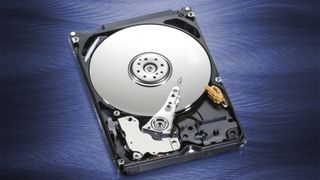How to move your operating system to another hard drive
You'll be delighted to know that figuring out how to move your operating system to another hard drive is easier than you think - here's how to do it

Knowing how to move your operating system to another hard drive might not be a skill you can utilize every day, but we promise you that mastering it is bound to come in handy sooner or later.
If you currently have one of the best hard drives, then learning how to move your operating system to a new one is likely not high on your list of priorities. But, if you have an older model that's starting to show signs of decline, then this guide will talk you through everything you need to know to help make swapping over an absolute piece of cake.
When it comes to moving your operating system to another hard drive, you have two choices - start from scratch and do a new operating system (OS) install or simply move it from your old drive. We're not going to lie, the former is a long and tedious process that we wouldn't wish on anyone - especially not a lovely person like yourself! Even when you have your OS up and running, you'll then need to re-install all your applications and transfer all your data and files - we mean, really, who has time for all of that?
Not us, that's for sure! Which is why we're huge fans of the second option, which is a lot less time consuming. If you have one of the best computers, the best and most pain-free way of migrating your information onto a new drive is to move your entire OS. Granted, it's still going to take you some time but we promise you that you'll lose far less hair in the process.
Before you get started, there are some tools you'll need which we've listed below. And if you find that storage space is an issue for you after making the switch, we recommend investing in one of the best external hard drives to give you the extra capacity you need. For now, let's talk you through how to move your operating system to another hard drive so that you can get back up and running as quickly as possible.
Before you get started…
Now, before we begin walking you through how to move your operating system to another hard drive, I want to point out some important prefaces. The most important of all is you need to make sure that your computer is virus-free. If it has a virus then that will copy over to your new hard drive. If your operating system is corrupt, then you run the risk of your information not being accessible or being corrupt on the copy (sometimes it won’t be a problem but it depends on the damage of the hard drive).
Also, make sure that you are moving to either the same size drive or bigger to ensure that the copy will not fail. This might sound like no-brainer, but it’s easy to overlook when you’re caught up in the excitement of it all.
Oletko ammattilainen? Tilaa meidän uutiskirjeemme
Rekisteröidy TechRadar Pro -uutiskirjeen tilaajaksi saadaksesi uusimmat uutiset, mielipiteet, artikkelit ja oppaat yrityksesi menestyksen parantamiseksi!
What you will need:
- A USB Flash Drive (with no data on it or one that is expendable)
- Maybe an hour (depending on how big your hard drive is)
- A storage disk to take a system image of your computer and save a backup (always do this!)
- Both hard disks installed
- TuxBoot
- CloneZilla
Get everything you need ready to how to move your operating system to another hard drive to ensure a smoother process. Once you have installed all the programs, settings, and have all the data you want, you can get started. Follow the steps below, and it should work out nicely and without a hitch.
1. Go to Windows/My Computer, and right-click on My Computer and select Manage. Once the window opens, choose Disk Management, and usually Windows will acknowledge a new disk has been located and that it needs to be initialized and formatted. Click OK and choose NTFS quick.
2. Download Tuxboot and CloneZilla. CloneZilla will be the application we will use to create an image of the hard drive, and Tuxboot is what we will use to mount it to the USB Flash Drive so that we can boot to it.
3. Once these applications are downloaded, plug in the flash drive that you will be using and format it clean, as we will be using this Flash Drive for CloneZilla. Go to Windows/My Computer, and right-click on My Computer and select Manage. Select the disk (making sure you do NOT select C: drive or another drive you are using) and right click and format it to NTFS Quick, and give it a Drive Letter.
4. Open Tuxboot. Once Tuxboot opens, click on the bottom and choose ISO and click the button to find the location of the CloneZilla live .ISO file. Once that is complete, make sure that the drive you are mounting CloneZilla to is the USB Flash Drive. Hit OK.
5. Reboot the computer and boot off of the USB Flash Drive. Go into BIOS. I don’t know what key that is for your computer but it is either F2 or the DEL key by default. Once you are in, go into your BOOT section and manually boot off of the USB flash drive. This will start CloneZilla.
6. Choose the default CloneZilla Start option, choose your Language Keyboard, choose Do Not Touch KeyMap, and choose the first option: “Start CloneZilla Live.”
And there you go. In just six steps, you've managed to how to move your operating system to another hard drive - well done!
Suosituimmat



